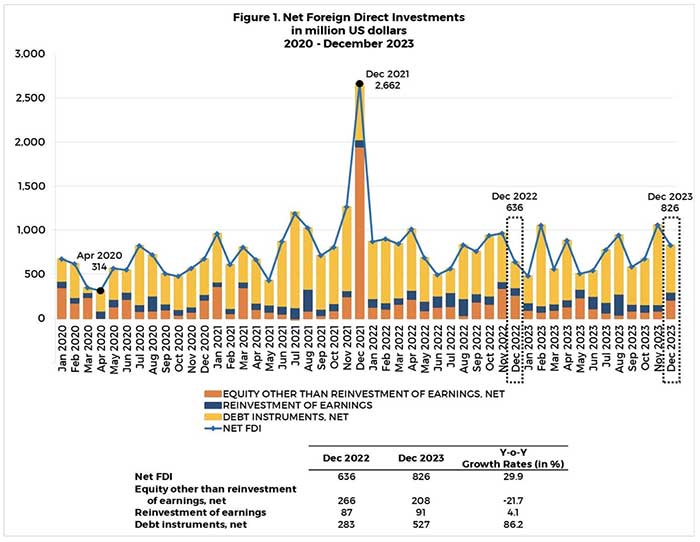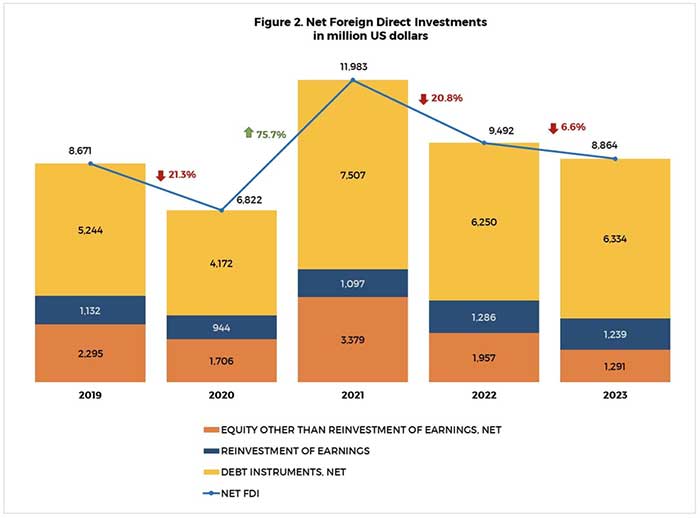Foreign direct investment (FDI) net inflows sustained its growth momentum in December 2023, increasing by 29.9 percent year-on-year to reach US$826 million from the US$636 million net inflows in December 2022. (Figure 1).[1],[2]
FDI increased mainly on the back of the 86.2 percent growth in nonresidents’ net investments in debt instruments to US$527 million from US$283 million in the comparable month in 2022.[3]
Similarly, reinvestment of earnings improved slightly by 4.1 percent to US$91 million from US$87 million.
Meanwhile, nonresidents’ net investments in equity capital (other than reinvestment of earnings) declined by 21.7 percent to US$208 million in December 2023 from US$266 million a year ago.

Bulk of the equity capital placements during the reference month came from Japan with investments directed mostly to the manufacturing industry.
The full-year 2023 FDI net inflows reached US$8.9 billion, or a contraction of 6.6 percent, from the US$9.5 billion net inflows recorded in 2022 (Figure 2).
Notwithstanding the country’s sound macroeconomic fundamentals, concerns over subdued global economic growth and geopolitical risks continued to weigh on investors’ investment plans.



[1] The BSP statistics on FDI are compiled based on the Balance of Payments and International Investment Position Manual, 6th Edition (BPM6). FDI includes (a) investment by a nonresident direct investor in a resident enterprise, whose equity capital in the latter is at least 10 percent, and (b) investment made by a nonresident subsidiary/associate in its resident direct investor. FDI can be in the form of equity capital, reinvestment of earnings, and borrowings.
[2] The BSP FDI statistics are distinct from the investment data of other government sources. BSP FDI covers actual investment inflows. By contrast, the approved foreign investments data that are published by the Philippine Statistics Authority (PSA), which are sourced from Investment Promotion Agencies (IPAs), represent investment commitments, which may not necessarily be realized fully, in a given period. Further, the said PSA data are not based on the 10 percent ownership criterion under BPM6. Moreover, the BSP’s FDI data are presented in net terms (i.e., equity capital placements less withdrawals), while the PSA’s foreign investment data do not account for equity withdrawals.
[3] Net investments in debt instruments consist mainly of intercompany borrowing/lending between foreign direct investors and their subsidiaries/affiliates in the Philippines. The remaining portion of net investments in debt instruments are investments made by nonresident subsidiaries/associates in their resident direct investors, i.e., reverse investment.




















